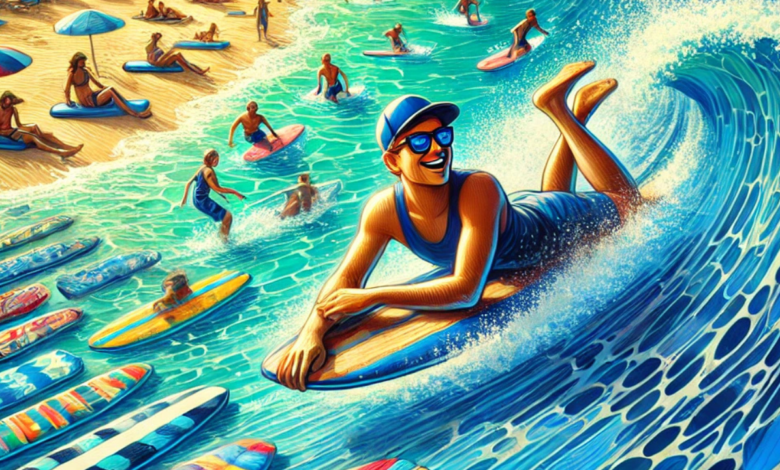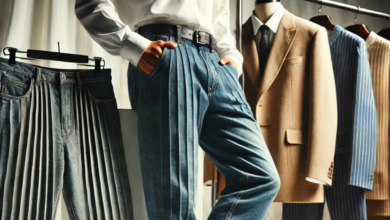Riding the Waves: Everything You Need to Know About Boogie Boards

Introduction: Dive Into the World of Boogie Boarding
Boogie boarding, also known as bodyboarding, is a thrilling water sport that offers fun and excitement for people of all ages and skill levels. Unlike surfing, boogie board ing allows participants to ride waves while lying flat on a buoyant board, making it an accessible activity even for beginners. Originating in the 1970s, this sport quickly gained popularity for its simplicity and ability to provide an adrenaline rush without the steep learning curve of traditional surfing.
As one of the easiest ways to engage with the ocean’s power, boogie boarding has become a favorite pastime at beaches worldwide. It’s not just a sport—it’s an experience that combines physical activity, connection with nature, and a sense of accomplishment as you ride the waves. Whether you’re a seasoned pro or someone just starting, there’s always something new to discover in boogie boarding.
Understanding Boogie Boards

What is a Boogie Board? A boogie board is a compact, lightweight board designed for wave riding. Unlike surfboards, which require standing and balancing, boogie boards are primarily used while lying flat, offering a stable and approachable platform for riders. This ease of use makes them ideal for kids, beginners, and anyone looking for a fun beach activity without extensive training.
Types of Boogie Boards Boogie boards come in various styles to suit different needs. Foam-core boards are lightweight and affordable, perfect for casual users. Wooden boards provide durability and a traditional feel, while inflatable boogie boards are easy to transport and store. Hybrid models combine features from multiple types, catering to intermediate and advanced riders.
Anatomy of a Boogie Board A typical boogie board consists of several components:
Deck: The upper surface where you lie. It provides comfort and grip.
Core: The board’s interior, is made from materials like polyethylene or polypropylene for strength and flexibility.
Slick: The bottom layer, is designed to reduce drag and enhance speed.
Rails: The edges of the board are crucial for maneuvering and control.
Leash: A strap that attaches the board to your wrist or ankle, preventing it from drifting away in the water.
Choosing the Right Boogie Board
Factors to Consider Selecting the right boogie board can significantly impact your experience. Key considerations include:
Size and Weight Compatibility: Boards should match the rider’s height and weight for optimal performance.
Skill Level: Beginners may prefer soft foam boards, while advanced users might opt for high-performance designs.
Wave Conditions: The type of waves you’ll encounter should influence your choice of board shape and material.
Popular Brands and Models Reputable manufacturers like Morey, NMD, and Hubboards offer high-quality boards catering to various needs. Whether you’re looking for budget-friendly options or premium performance, these brands provide reliable choices for every rider.
Accessories for Boogie Boarding Enhance your experience with essential accessories. Fins improve propulsion and control, while leashes keep your board secure. Wetsuits are invaluable for comfort and protection in cooler waters. Proper maintenance tools, such as wax and repair kits, ensure your board remains in top condition.
Boogie Boarding Techniques and Safety Tips
How to Use a Boogie Board Learning to boogie board is straightforward and rewarding. Start by positioning yourself correctly on the board, with your torso on the deck and hands gripping the sides. Paddle into the water and align yourself with an incoming wave. As the wave approaches, kick with your legs and lean slightly forward to catch its momentum. With practice, you’ll master timing and maneuvering, enhancing your wave-riding skills.
Safety Guidelines Safety is paramount in boogie boarding. Always check weather and wave conditions before heading out, and avoid venturing into dangerous surf zones. Wearing a leash ensures you won’t lose your board, and fins provide extra control in challenging waves. Be mindful of crowded beaches, respecting the space and safety of other surfers.
Advanced Tips for Enthusiasts For those looking to take their skills to the next level, practice riding bigger waves and attempting tricks like spins and flips. Invest in high-quality equipment designed for advanced maneuvers. Building core strength and endurance through regular exercise can also improve your performance and reduce the risk of injuries.
The Joy of Boogie Boarding for All Ages
Boogie boarding is a versatile activity that appeals to kids, teens, and adults alike. For children, it’s an exciting way to develop water confidence and coordination. Teenagers enjoy the thrill of mastering waves and performing tricks, while adults appreciate the opportunity to stay active and connect with nature.
Beyond the physical benefits, boogie boarding fosters mental well-being by reducing stress and promoting a sense of adventure. The sport also encourages social interactions, as many beaches host boogie-boarding communities where riders share tips, stories, and camaraderie. Whether you’re seeking fitness, fun, or relaxation, boogie boarding offers it all.
Conclusion: Embrace the Thrill of the Ocean
Boogie boarding is more than just a sport—it’s a gateway to the exhilarating world of wave riding. With the right board, proper techniques, and a focus on safety, anyone can enjoy this accessible and rewarding activity. Whether you’re gliding over gentle swells or tackling powerful surf, boogie boarding guarantees endless fun and unforgettable memories. So grab your board, head to the beach, and let the waves carry you to adventure.
FAQs
What is the difference between a boogie board and a bodyboard?
Boogie boards and bodyboards are essentially the same, with “boogie board” being a trademarked term popularized by Tom Morey.
What size boogie board should I buy for my height and weight?
Choose a board that reaches just above your belly button when stood upright. Heavier riders may need wider boards for better buoyancy.
Are boogie boards suitable for beginners and non-swimmers?
Yes, boogie boards are beginner-friendly, but non-swimmers should use them in shallow water and under supervision.
What materials are commonly used to make boogie boards?
Common materials include polyethylene and polypropylene cores, which provide durability and flexibility.
How can I maintain and care for my boogie board?
Rinse your board with fresh water after use, avoid prolonged sun exposure, and store it in a cool, dry place.
Do I need fins for boogie boarding, and how do I choose the right ones?
Fins are optional but helpful for better propulsion. Choose fins that fit comfortably and suit your wave conditions.
What are the best beaches for boogie boarding?
Beaches with consistent waves and sandy bottoms, such as Waikiki in Hawaii or Bondi Beach in Australia, are ideal.
Is boogie boarding safe for children, and what precautions should I take?
Boogie boarding is safe for children when supervised. Equip them with a leash and ensure they stay in shallow waters.
Can I use a boogie board in calm water or swimming pools?
Yes, boogie boards can be used in calm water, but they’re best enjoyed in waves for the full experience.
How do I learn advanced tricks and techniques in boogie boarding?
Practice regularly, watch tutorials, and join boogie-boarding communities to refine your skills and learn new techniques.
You May Also Read: https://bestusatime.com/pinterest-careers/



